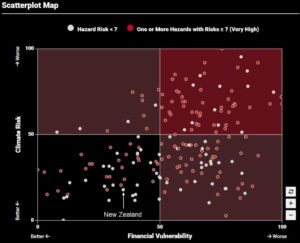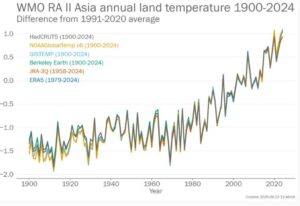NZ ranks 18th, EU moves the goalposts and redefining coffee
In this issue:
NZ ranks 18th
That’s in the new Climate Finance Vulnerability Index, published by Columbia University. The index covers 188 countries and attempts to add to understanding of climate vulnerability to help in targeting climate change adaptation finance. The least vulnerable country is Norway, followed by South Korea, Switzerland, Denmark and Estonia. New Zealand comes in 18th, just behind Finland and Iceland and just ahead of Luxembourg, Belgium and France. Australia comes in at 27th. As you might expect, developing countries dominate the other end of the list, the most vulnerable being Guinea-Bissau.
EU moves the goalposts
An interesting compromise was confirmed by the EU this week when it officially proposed overseas credits could be used for offsetting. The move has allowed the EU to retain its stated targets but also opened a new avenue for achieving them, albeit with some limits on quite how many international credits can be used. Nevertheless, it does mean there will be more countries searching out international offsets come 2030. Of course, there could be significant implications for NZ. We are currently woefully behind our Paris 2030 targets and are facing a massive offset bill in just five years. With significantly increased competition, prices will skyrocket even more than we might previously have expected. Yet more reasons to support emission reduction programmes now rather than kick the can down the road, to then be up a rather stinky creek.
Asia warming at double the average
European heatwaves have been dominating the international climate news recently and sneaking under the radar has been the findings of the latest World Meteorological Organisation (WMO) report on State of the Climate in Asia 2024, which informs us Asia is warming at twice the global average. The temperature increase over land mass exceeds that over oceans and given the size of Asia, it is experiencing those higher average warming rates.
30% discount on batteries across the ditch
Australia’s new, national domestic battery programme kicked off on 1st July offering a 30% discount on battery storage systems. The programme supports the existing Small Scale Renewable Energy Scheme (SRES), which already provides support for PV, thermal solar, small hydro, small wind and heat pump installations. The scheme is in addition to numerous state schemes meaning many Australian’s are enjoying hefty discounts on residential renewables and will soon be far better placed for resilience.
At a glance indicators updated
Anyone needing some interesting data comparisons and charts for presentations might be interested in the recently updated Environment at a Glance Indicators from the OECD. The indicators report numerous data items covering climate change, air quality, water resources, waste, biodiversity and energy.
Historic law of physics shattered
For over 150 years Kirchhoff’s law was acknowledged and accepted as one of the foundations of understanding heat. Kirchhoff’s law of thermal radiation (1860) states a material’s ability to absorb energy at a specific wavelength and angle is equal to its ability to emit it. The law was first undone about two years when scientists uncovered a reciprocity not equalling zero but the variance was small and unmeaningful. Now, a team from Penn State University have torn the law apart finding reciprocity of 0.43 for a newly designed, five-layer structure. The finding has huge implications for the design and efficiency of solar panels.
Redefining coffee bricks
Up until now a coffee brick has been one of those vacuum sealed packs of pre-ground beans for the espresso machine or plunger. However, scientists from Swinburne University are redefining the term. They have developed a construction brick made from used coffee grounds that delivers wins across the board. Around 9 million tonnes of coffee grounds were used last year for making the popular beverage, leading to about 18 million tonnes of wet, spent grounds, almost all of which will go to landfill. Even if spread around the garden, it still emits methane when decomposing. However, if mixed with clay, bricks can be baked at 200C, around 80% less than the temperature needed for traditional brick manufacture. The bricks boast double the strength of Australia’s minimum standard. So, the list of benefits includes less waste to landfill, fewer methane emissions, 80% energy saving in manufacture and a much more sustainable product.
Did you know ……
Passengers in EVs can be more susceptible to motion sickness than if in an ICE car? Apparently, it’s the braking system that’s usually the biggest culprit with regenerative systems emitting a low frequency sound that scrambles nervous systems upsetting natural balances. But help is at hand. Scientists from Nagoya University have established a short burst – only around a minute – of sound at 100Hz before a journey calms the nervous system and helps maintain equilibrium.


